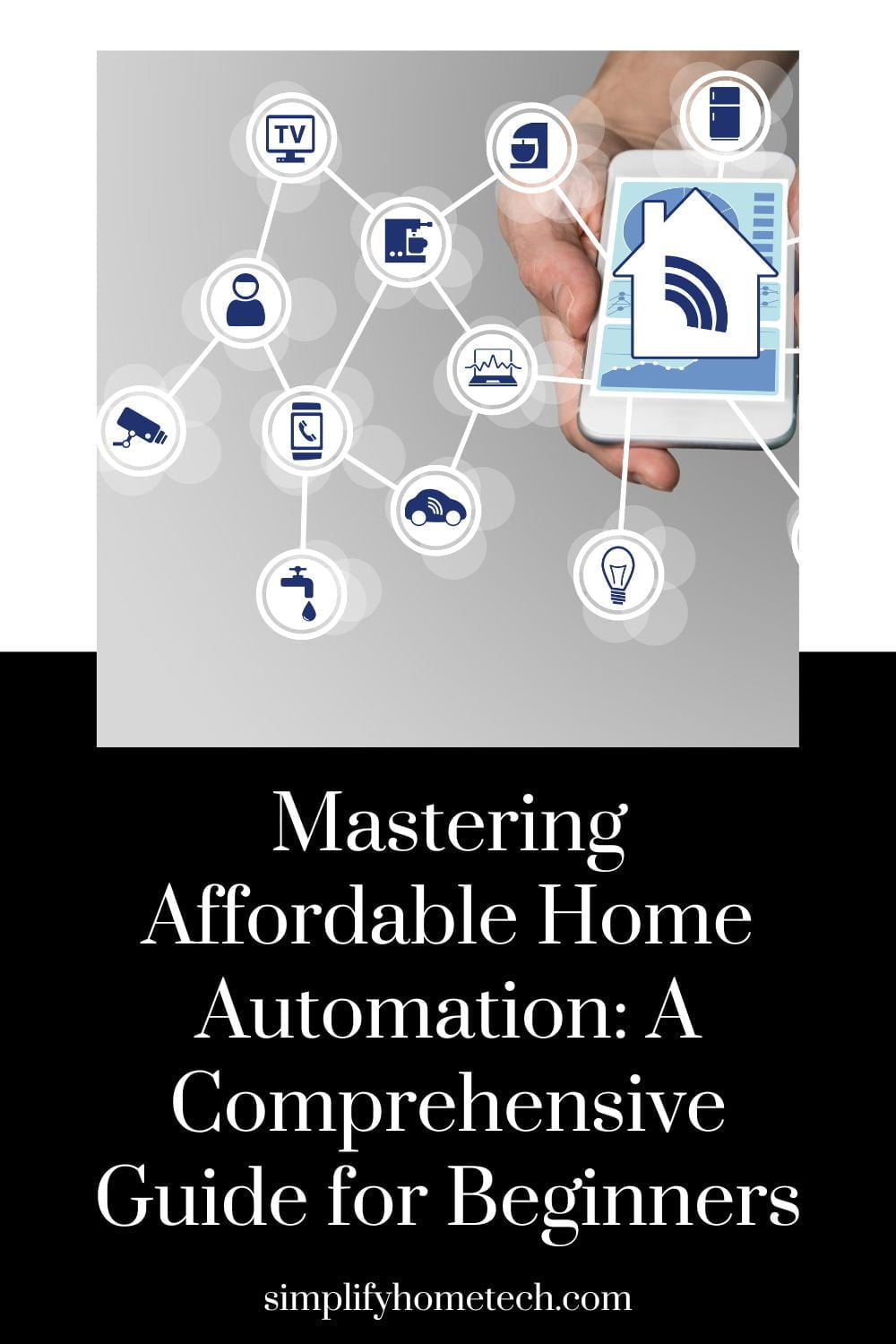Embarking on the journey of home automation can seem daunting, especially when the cost becomes a concern. However, with the advent of affordable home automation devices, creating a smart home on a budget has become more feasible than ever. Whether you’re a novice taking your first steps or someone wanting to expand their existing smart home on a budget, this comprehensive guide will introduce you to a range of affordable home automation devices that are perfect for beginners.
1. Getting Started with Smart Plugs
Smart plugs serve as an excellent starting point for beginners in home automation. These devices are essentially power outlets that you can control remotely using your smartphone or tablet. By plugging your traditional appliances into a smart plug, you essentially transform them into smart appliances.
For example, the TP-Link Kasa Smart Wi-Fi Plug not only allows you to turn your appliances on and off remotely through the Kasa Smart app but also lets you set schedules and timers. This means you can have your coffee maker start brewing just before you wake up or your lights switch on automatically in the evening, making your home appear occupied even when you’re away.
2. Embrace Efficiency with Smart Bulbs
Next up, smart bulbs, such as the Philips Hue White A19 LED Smart Bulbs, offer a highly efficient and customizable lighting solution. Unlike traditional light bulbs, smart bulbs connect to your Wi-Fi network, allowing you to control them remotely through an app. You can turn the lights on or off, dim them, or even change their color (if you opt for RGB variants), all without needing to touch a switch.
Moreover, smart bulbs can be programmed to follow a specific schedule. You can set them to slowly brighten in the morning to help you wake up naturally or dim in the evening for a cozy atmosphere. Some smart bulbs can even sync with your music or movies, creating a dynamic lighting experience that enhances your entertainment.
3. Enhancing Home Security with Smart Locks
Smart locks offer a great deal of convenience and enhanced security for your home. The August Smart Lock, for instance, is an affordable yet robust smart lock option. It replaces your traditional lock and can be controlled through your smartphone.
Keyless entry, automatic locking and unlocking when you leave or approach, and the ability to provide temporary access to guests are just a few features that smart locks offer. You can also monitor access to your home in real time, receiving notifications each time the lock is used, offering peace of mind when you’re away.
4. Improve Comfort with Smart Thermostats
Smart thermostats like the Google Nest Thermostat E can transform the way you heat and cool your home. Unlike traditional thermostats, smart thermostats can be controlled remotely, and they can learn your schedule and preferences over time.
You can set temperature schedules based on your lifestyle. If your home is empty during the day, the thermostat can lower the heating or cooling and then adjust it for comfort just before you return. This not only maintains a comfortable environment but also helps save energy, as the heating or cooling system is not running unnecessarily.
5. Streamlining Household Chores with Robotic Vacuums
Automating household chores is another area where home automation shines, and robotic vacuums are a popular choice. Devices like the eufy by Anker, and RoboVac 11S, offer powerful suction, automatic cleaning schedules, and smart features like auto-return to their charging base, all in a slim design that fits under most furniture.
With a robotic vacuum, you can schedule cleanings to fit your routine, freeing up your time for more enjoyable activities. Many models also offer smart features like obstacle detection and drop-sensing technology to prevent them from bumping into furniture or falling down stairs. Some even pair with virtual assistants like Amazon Alexa or Google Assistant, allowing for voice control.
6. Intelligent Voice Assistants
For a complete, affordable home automation experience, investing in a smart voice assistant like Amazon’s Echo Dot or Google’s Nest Mini is a great idea. These devices offer a central hub to control all your compatible smart devices. From changing the temperature on your smart thermostat to turning on your smart lights or asking for the weather forecast, voice assistants can perform a wide range of tasks using simple voice commands.
Besides serving as a control hub, these devices can also stream music, set alarms, answer questions, read the news, and even tell jokes. They’re designed to make your life more comfortable and entertaining. For example, Amazon Echo devices are equipped with Alexa, Amazon’s voice assistant, which can integrate with numerous other smart home devices. Similarly, Google’s Nest Mini uses Google Assistant for seamless control of your smart home devices.
7. Affordable Smart Home Security Cameras
Home security is a crucial part of any smart home setup, and fortunately, there are plenty of affordable smart home security cameras available on the market. Cameras like the Wyze Cam v3 offer impressive features at a fraction of the cost of high-end models.
These devices provide a 24/7 live video feed that you can access remotely through an app, giving you peace of mind no matter where you are. They can send alerts to your phone when they detect motion or sound, and some models even have two-way audio, enabling you to listen and speak to visitors. Most smart cameras also offer night vision and are designed to withstand outdoor conditions, making them ideal for monitoring the exterior of your home.
Integrating affordable smart cameras with other smart home devices, such as smart locks or smart lights, can enhance your home’s security. For example, if your camera detects movement outside your home, it can trigger the smart lights to turn on, potentially deterring any unwelcome visitors.
8. Smart Doorbells
As an extension of home security, smart doorbells add an extra layer of protection and convenience. Budget-friendly options like the Ring Video Doorbell Wired provide features such as two-way audio, high-definition video, and motion detection alerts.
With a smart doorbell, you can see, hear, and speak to whoever is at your door from anywhere using your smartphone. Some models also offer features such as pre-recorded quick-response messages and integration with smart locks, enabling you to unlock the door remotely if the visitor is someone you know.
9. Smart Blinds and Shades
Smart blinds and shades represent another automation area often overlooked. Affordable options like MySmartBlinds Automation Kit allow you to automate your existing window coverings.
Once installed, you can control your blinds or shades from your phone, scheduling them to open or close at specific times, or adjusting them based on the weather. Some smart blinds can even track the sun’s position and adjust the blinds accordingly for optimal lighting and temperature control.
By automating your window coverings, you’re not only enhancing the comfort and aesthetics of your home but also increasing its energy efficiency. For instance, scheduling your blinds to close during the hottest part of the day can reduce the load on your air conditioning, saving energy and lowering your utility bills.
Conclusion
The realm of home automation is no longer exclusive to tech-savvy homeowners or those with deep pockets. With affordable home automation devices, everyone can transform their home into a smart, energy-efficient, and secure haven. Start small with smart plugs or bulbs, and gradually introduce devices like smart thermostats, robotic vacuums, voice assistants, and smart security cameras. Remember, a smart home is not built in a day, and every small step toward automation is a giant leap toward a more comfortable and efficient living experience.
You might also like,

